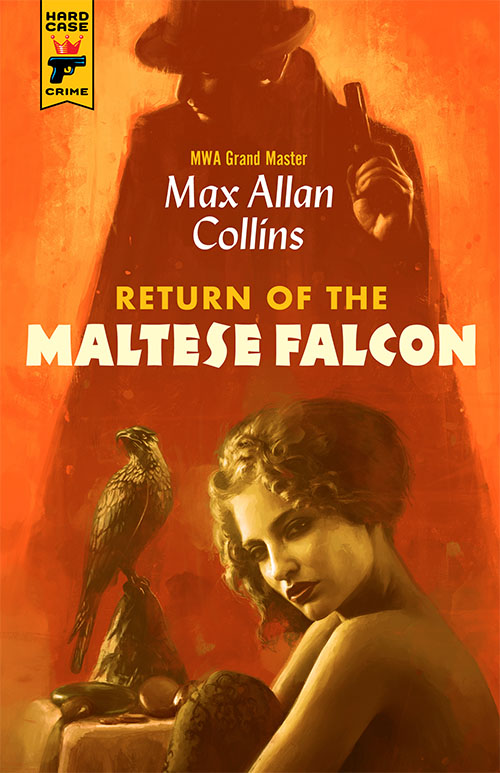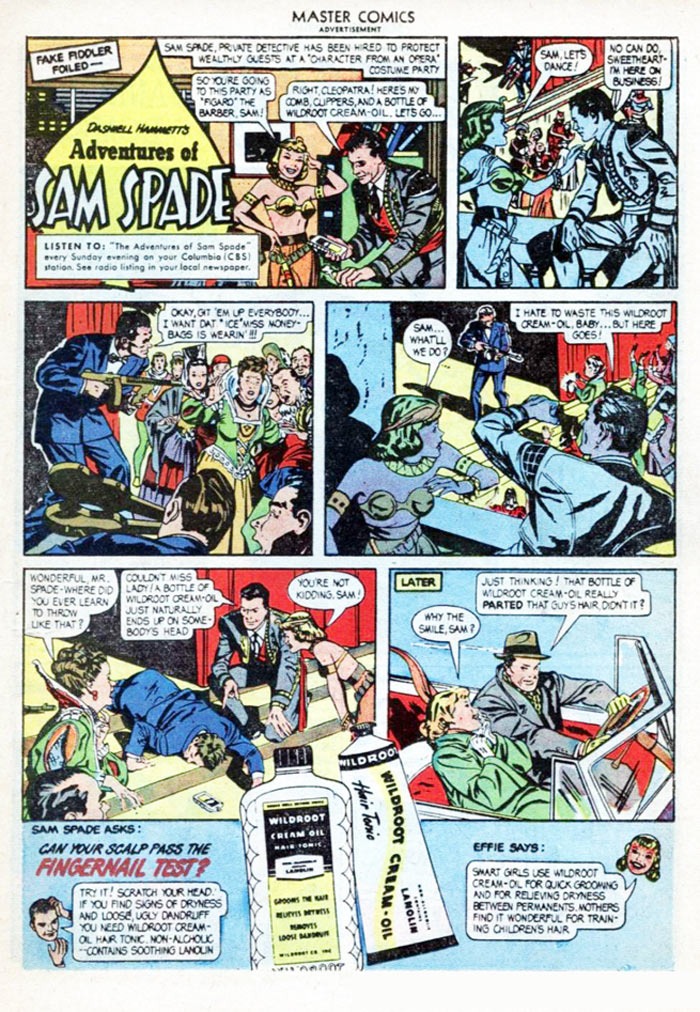The cover of my forthcoming (January 2026) novel, The Return of the Maltese Falcon, is turning up here and there online…so I’ll join in.
And I’m pleased – frankly, thrilled – to share this Publisher’s Weekly advance review with you:
I’ve discussed how I came to write this novel elsewhere, but – to recap briefly – I had long been keeping my eye on the status of the original Maltese Falcon, re: public domain status, and was proactive (as they say) about trying to be first in line to take advantage of that status.
I love The Maltese Falcon – it’s my favorite book – and have fantasized about writing a sequel for years. I was frustrated by there only being one Sam Spade novel, and was ecstatic in high school when I stumbled across a copy of a paperback called The Adventures of Sam Spade, which included Hammett’s only three short stories about the seminal private eye.
Now, I realize there were fictional P.I.’s before Sam Spade, notably Race Williams, the prototype for Mike Hammer (Daly was Mickey Spillane’s favorite writer as a kid). But Spade was the template – the whole private eye genre so many (me too) followed was there, from the secretary in love with her private eye boss to the cop friend, from the cop adversary to the menacing thug, from the femme fatale to the formidable crime boss. It was – and is – all there…a genre Hammett in effect invented, perfected, and almost immediately abandoned.
As a kid – maybe 10 or 11, and already in the sway of detectives Dick Tracy and Sherlock Holmes – I heard The Adventures of Sam Spade on the radio. I’m not sure how, as the timing is wrong – the series was a ‘40s and very early ‘50s phenomenon, and I was too young. Maybe a nostalgia broadcast of some kind. But somehow I have that (maybe false) memory.
Something that is not a false memory – yet makes almost as little sense – is my seeing and enjoying the Sam Spade comic strip that appeared sporadically in Sunday newspaper comics sections. This was an ad disguised as a comic strip from Wildroot Cream-Oil (who later placed Li’l Abner and Fearless Fosdick ad/comics in newspapers and magazines). These were usually beautifully drawn by comic-book genius Lou Fine.
Why I know about this strip, I’m not sure – because of Dashiell Hammett’s clash with Joe McCarthy over the former’s communist leanings (and Spade star Howard Duff being similarly tarnished), The Adventures of Sam Spade became The Adventures of Charlie Wild before sputtering out around 1951.
And I have no memory of Charlie Wild.
Yet somehow Spade got on my radar. This may be due to my obsession as a youth with comics, particularly newspaper comics, as I would snatch up any old comics sections or even pages I came across. This is vague in my memory, as I say, but I do remember both the Spade radio show and the Wild Root ad/comic Sunday page feature (which was, I think, also printed in comic books and I was always snatching up older comics when I ran across them).
It’s not the famous movie that got Spade on my kid radar. I didn’t see that until I was in junior high and caught up in the private eye fad on TV (Peter Gunn, 77 Sunset Strip), which led me into reading the book series that many of these shows were based on.
I haven’t listened to many of the Spade radio shows over the years, because once I read The Maltese Falcon, I realized those shows were spoofy versions of a very serious (in the best sense) fictional character and his world. The series did adapt some Hammett stories early on (not Spade ones, to my knowledge) and a Falcon sequel I’ve never heard, either. This series is interesting to me only in having ingrained Spade further into the pop culture.
The three Spade short stories, incidentally, were published in 1932 and are probably a result of the first Maltese Falcon film (1931) with Ricardo Cortez as Sam. This version is better than it’s cracked up to be, as it’s pre-Code and includes Brigid’s enforced striptease. Donald E. Westlake liked the first attempt and recommended it to me. He even had it screened at one of his Mohonk mystery weekends (I was the murderer in the game, by the way).
Nobody likes the second version, Satan Met a Lady (1936). The detective (Warren William) isn’t even called Sam Spade, although the film’s title seems to refer to Hammett’s description of Spade on the first page of The Falcon.
I made a point of avoiding re-screening either the ‘31 or the ‘41 version (and or course didn’t bother with Satan Met a Lady, even if it did have Bette Davis in it). I wanted – needed – to focus on the Hammett novel itself and not attempt any tie to the Warner Bros film.
That may seem odd, since John Huston’s Maltese Falcon is famously incredibly faithful. Legend has it the screenplay was just Huston’s secretary typing up the dialogue from the book for the director, and then that “script” got accidentally green-lighted. Probably apocryphal, but a wonderful story nonetheless.
And to bring Don Westlake back into it, we shared with each other that we’d both followed the movie along in the book.
How is the Huston film different from its source? Mostly it’s Bogart. The Spade of Hammett’s novel – and mine – lacks the warmth that peeks out, and sometimes surges out, from Bogie’s Sam. But Sam Spade as Hammett conceived him was self-contained and even cold. The book and the famous film also have a slightly different tone – the jaunty score is a factor.
I do wonder how many readers of my novel will picture Bogart as Spade, despite my echoing the Hammett description of a blond Satan.
You can pre-order the novel here.
M.A.C.









